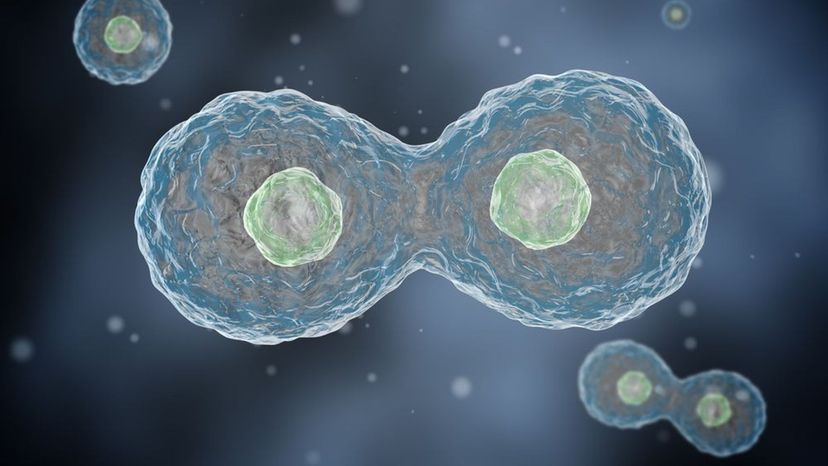
About This Quiz
Biology makes the world go 'round. The science of life can be rather complicated, but the main points are simple, and everyone should know them. That includes you! Conquer this quiz, and know that your brain is not a single-celled organism.Abscission is the shedding of flowers and leaves by plants. This also includes fruit. The hormone that regulates this is abscisic acid.
Absolute zero is the lowest possible temperature. This is expressed as 0 kelvins, or −273.15 degrees Celsius, or −459.67 degrees Fahrenheit.
Behavioral ecology is the study of the revolutionary basis for animal behavior. This is due to ecological pressures.
Advertisement
Bile is produced in the liver of most vertebrates. This aids in digestion of lipids in the small intestine.
Binary fission refers to cell division. More specifically, one cell dividing into two identical daughter cells.
Carbon fixation is the process that plants go through. They convert inorganic carbon dioxide to organic compounds for living organisms.
Advertisement
The cell is the structural and functional unit of all organisms. It's an autonomous self-replicating unit.
A chemical compound contains two or more chemically bonded elements. A fixed ratio determines the composition.
Chloroplast or organelles, or specialized subunits. They are found in plants and algae, and they conduct photosynthesis.
Advertisement
A Dalton is a unit of mass, also known as an atomic mass unit. It is equal to the mass of a hydrogen atom.
Darwinian fitness characterizes the genetic contribution of an individual to the next generation's gene pool. This is relative to the average for the population.
DNA stands for deoxyribonucleic acid. This is the hereditary material in humans and all other organisms.
Advertisement
An ecosystem is a physical environment where living organisms interact. This interaction includes non-living things.
The electron is the subatomic particle that has a negative charge. Electrons are elementary particles in that they have no components or substructure.
Entomology is the study of insects. Etymology is the study of words.
Advertisement
Mammalogy is the study of mammals. This class of organisms is defined by homeothermic metabolism, fur, four-chambered hearts and complex nervous systems.
All animals have embryos during the development stage. The name of the human embryo is the fetus. It takes 8 weeks of development before the fetus appears.
The food chain is the chain of eating and nutrition. It starts with small herbivores and ends up with large carnivores.
Advertisement
Ganglion are clusters of nerve cell bodies in the central nervous system. They're also called ganglia.
DNA is the molecular unit of heredity. DNA encodes a functional RNA, or protein product.
Genetics is the study of heredity. It's very much involved with genes and chromosomes.
Advertisement
A hadron is any particle that is made from quarks, anti-quarks and gluons. No, quark is not just a form of soft cheese.
A hermaphrodite is an organism that is born with both male and female sex organs. Hermaphrodites are quite rare in the human world.
Hydrocarbon is entirely made of hydrogen and carbon. Hydrocarbon is studied in organic chemistry.
Advertisement
Have you never heard of Ichthyology? It's the study of fish. This includes bony fish, cartilaginous fish and jawless fish.
Insulin is used in the body to keep blood sugar from getting too high. It even prevents it from getting too low. These are called hypoglycemia and hyperglycemia.
An ion is a molecule or atom that loses one electron. This results in a net electric charge.
Advertisement
Linked genes are close together on the same chromosome. Scientists believe that these genes do not act independently of one another.
The M Phase is a way of referring to mitosis and cytokinesis. These two together are the Mitotic phase of the animal cell cycle.
Carbohydrates, proteins and fats are the three main macronutrients. These foods provide calories and energy.
Advertisement
Messenger RNA is a large family of RNA molecules which convey genetic information. They travel from the DNA to the ribosome.
Organs are defined as a set of tissues that are joined in a structural unit. These tissues all serve a common function.
Paleontology is the study of the history of life on earth. This is done through the study of fossils and traces of organisms.
Advertisement
A quark is an elementary particle and a fundamental constituent of matter. Quarks form hadrons, and these include protons and neutrons.